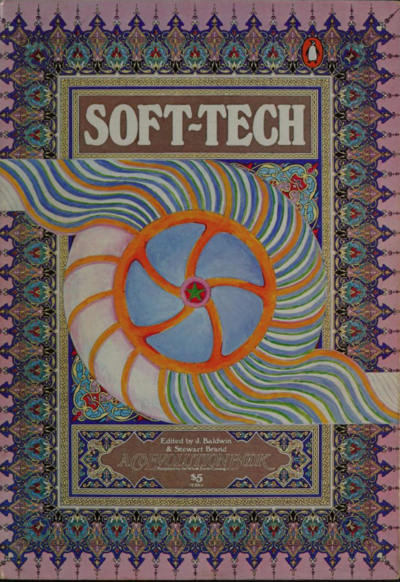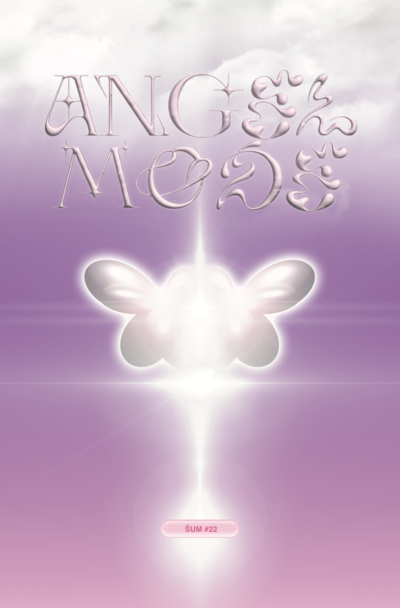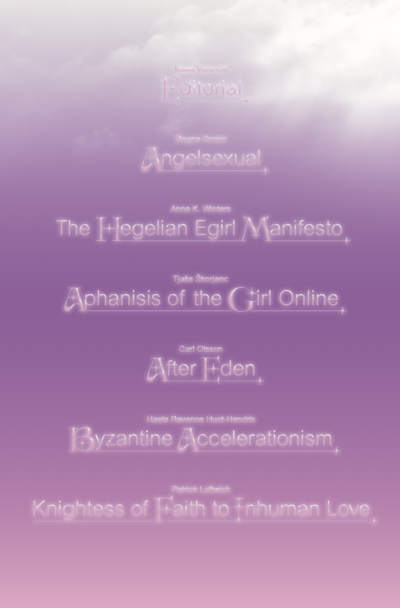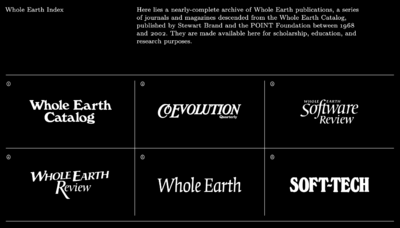[004]
Multidimensional citation
Collective
speculative
At the start of 2020 we announced our collaboration by sending around a postcard. Three women in stone-colored clothing sat on the ground, our faces staring directly into the camera in a diagonal cascade. The postcard also contained a link to our website where we described ourselves and our collaboration.
Our differences allowed us to come together in a complementary way. An alliance of islands intuitively felt like our symbol: and for this reason we used three dots cascading ⋱ for our website’s favicon — the small icon that appears near the web browser’s address bar.
“A citation should not be singular, but instead explicitly connected to the lineage of research that came before it.”
01.01.26
[014]
The User Condition: Computer Agency and Behaviour
Individual
critical
The User Condition is a micro-interactive essay on computer agency and behavior, and was developed within the 2020 research group organized by the Lectorate Design of KABK. What are the conditions for a computer user to gain agency, defined here as the ability to evade automatisms? What is the user’s horizon of autonomy within a built world made of software programmed by somebody else, when its logic is made inaccessible in the name of convenience?
01.01.26
[018]
Figuring Things out Together
Individual
critical
This dissertation explores matters of collectivity, drawing from the experience of working with the Amsterdam-based collective Hackers & Designers (H&D). The main thesis of this research is that conventional design vocabularies are not capable of sufficiently expressing and accounting for collectivities‘ resistance to fixation and stabilization. Collective design as it is discussed here challenges notions of individual authorship, differentiations between disciplines, between product and process or between the user and maker. While collectives shape particular affiliations and commitments, design approaches and aesthetics, they also require perspectives on working and designing together that resist linearity, and a progress-based understanding of a design process. By means of several case studies, it is argued that the fragmentation of social and work relations is as much a characteristic of collective practice as the effort to sustain long-term relationships.Thus, collective practice is not fully deliberate, at least not in the same way as for instance ‘teamwork’, ‘the commons’, or ‘cooperativism’, are purposeful organizational frameworks for living, working or being together. Collective Collective design processes take part in and are a result of particular (often fragile) socio-economic, socio-technical conditions that pervade and shape the ways collectives function.
“This publication derives from an enthusiasm for the various ways collective learning environments take shape. It grew out of a curiosity for the ways that such practices are shared across different localities, timelines, and experiences.”
01.01.26
[029]
Girl Online: A User Manual
Individual
social
What happens when a woman goes online? She becomes a girl.
The unwritten contract of the internet, that a user is what is used, extends from the well-examined issue of data privacy and consent to the very selves women are encouraged to create in order to appear. Invited to self-construct as 'girls online', vloggers, bloggers and influencers sign a devil's bargain: a platform on the condition they commodify themselves, eternally youthful, cute and responsibility-free, hiding offline domestic, professional and emotional labour while paying for their online presence with ‘accounts’ of personal ‘experience’. Can a Girl Online use these platforms not only to escape meatspace oppressions, but as spaces for survival, creativity and resistance?
Told via the arresting personal narrative of one woman negotiating the (cyber)space between her identities as girl, mother, writer, and commodified online persona, Girl Online is written in a plethora of the online styles, from programming language to the blog/diary, from tweets to lyric prose, taking in selfies, social media, celebrity and Cyberfeminism.
01.01.26
[058]
Whole Earth Index
Collaboration
social

The Whole Earth Software Catalogue, Spring 1985

Soft-Tech, Spring 1978
Here lies a nearly-complete archive of Whole Earth publications, a series of journals and magazines descended from the Whole Earth Catalog, published by Stewart Brand and the POINT Foundation between 1968 and 2002. They are made available here for scholarship, education, and research purposes. The Whole Earth Catalog was an American counterculture magazine and product catalog published by Stewart Brand several times a year between 1968 and 1972, and occasionally thereafter, until 1998. The magazine featured essays and articles, but was primarily focused on product reviews. The editorial focus was on self-sufficiency, ecology, alternative education, “do it yourself,” and holism, featuring the slogan “access to tools.”
Whole Earth published a number of singular publications throughout its run focused on topical themes, or containing content from aligned organizations. Often these volumes reprinted articles from prior Whole Earth perodical journals, supplemented with new content. And, while the entire archive is insightful and lives up to its “access to tools, ideas, and practices” byline, side projects like 'The Whole Earth Software Catalog' deserve special attention. Originally proposed by John Brockman as a magazine which “would do for computing what the original had done for the counterculture: identify and recommend the best tools as they emerged”, it seems to have been to ahead of its time. The first issue was released in the Fall of 1984. The Whole Earth Software Catalog was a business failure, however, and was only published twice, with only three of the Whole Earth Software Review supplements published. If we were to position this publication in the here and now, it would most likely belong to the niche digital networks that are sprouting from spaces such as are.na and the handmade web.
“Soft Tech is a term we’ve used and defended since the late sixties. Soft signifies that something is alive, resilient, adaptive, maybe even lovable.”
01.01.26
[066]
Moodbored
Individual
critical
Olivia Linnea Rogers explores the rise of digital mood boarding as a modern form of identity exploration and creative expression. Originally physical collages, mood boards have evolved online, becoming aspirational but intangible collections of lifestyle aesthetics. It reflects on how images once rare and precious are now curated endlessly on platforms like Pinterest, shaping identity through associations with unattainable ideals. Rogers suggests mood boarding reflects consumerism, escapism, and a desire for curated self-expression, raising questions about authenticity in digital self-construction.
“There is no place for self-actualisation like the Internet. To put on and take off identities, personalities, interests, and styles with no cost at all and by simply lifting a pointer finger. This has generally been considered an advantage of the Internet. I’d argue it is not. It feeds an instinct that has been trained in us from marketing executives. You can create a “self” and a “space” for that self, with none of it being real at all.”
01.01.26
[068]
ŠUM#22 Angel Mode
Collaboration
philosophy

ŠUM22: ANGEL MODE Design by Jaka NeonEdited by Maks Valenčič and Tisa Troha

ŠUM22: ANGEL MODE Design by Jaka NeonEdited by Maks Valenčič and Tisa Troha
The journal ŠUM#22 – Angel Mode explores themes in contemporary art, theory, and speculative fiction. Key articles include topics such as online identities, accelerationist philosophy, the concept of "angelic sexuality," and reinterpretations of faith and love in the digital age. Contributors like Bogna Konior and Haela Ravenna Hunt-Hendrix discuss theoretical frameworks connecting cyberculture and philosophy. The issue is edited by Maks Valenčič and Tisa Troha.
The Angel Mode Issue explores the intersection of online aesthetics and identities, focusing on the "angel" as a symbol for transcendent, hyper-feminine personas. This ties into ongoing online discourse of femininity, vulnerability, and performance, often communicated through ethereal-esque aesthetics, cyberpunk references, and soft romanticism style write-ups. The "angel" metaphor also critiques our roles in cybernetic systems, where humans act as conduits for larger external forces. Embracing this mode reflects a shift from individuality toward alignment with overarching digital and 'transcendental' patterns.
“As human agency erodes, faced with singularity and extinction, the figure of “the girl (on the internet)” is on the rise. In the new issue of Šum we explore how this surrender of agency mediates (human) history itself.”
01.01.26
[073]
Why We Can’t Have Nice Things : Social Media’s Influence on Fashion, Ethics, and Property
Academia
critical
Minh-ha T. Pham critically examines the intersection of digital culture and the fashion industry, exploring how social media reshapes ideas of creativity, ownership, and ethical labor. Through incisive analysis, Pham unveils how influencers and platforms commodify aesthetics while obscuring labor inequalities and perpetuating exploitative practices. The book critiques fast fashion and intellectual property disputes, highlighting the ethical dilemmas amplified by digital visibility. With its interdisciplinary approach, the text invites readers to reconsider their complicity in sustaining inequitable systems. A timely contribution, it challenges dominant narratives about fashion's democratization.
01.01.26
[074]
Your Internet Browser Does Not Belong to You
Individual
critical
In the The WIRED article Showler explores how browsers not only serve as gateways to the internet but also influence the way we think, act, and are surveilled online. It examines how features like tabs and private search, initially intended to enhance user experience, reflect and shape our fractured attention spans and desire for privacy. However, the browser’s underlying mechanics, such as tracking and personalized responses to user behavior, expose the tension between browsing as a free, casual act and its deep ties to commercial and surveillance interests. Ultimately, it argues that browsers subtly dictate how we interact with digital spaces, challenging notions of neutrality and autonomy in online environments.
“To use a browser is, directly or indirectly, to participate in commerce. No act of browsing is ever really idle.”
01.01.26
[078]
Swiping Dichotomies: Losing Self-determination to a Digital Gesture — and How to Gain It Back
Individual
critical

Swiping Dichotomies website by Akseli Manner
In "Swiping Dichotomies," Akseli Manner critically examines the swiping gesture in digital interactions, particularly in dating apps. It explores the origins of swiping, its tactile and psychological effects, and its role in shaping user autonomy. The thesis questions how algorithmic design influences decision-making, reducing complex human interactions to binary choices. By analyzing swiping's cultural and technological significance, Manner highlights the tension between agency and automation in digital interfaces. The work ultimately seeks to reclaim more intentional, nuanced interactions in a world increasingly driven by frictionless, habitual gestures dictated by platform logic and commercial interests.
By examining the origins, cultural significance and tactile nature of swiping, this thesis establishes swiping as both a technological object and a cultural phenomenon. In exploring whether such gestures enhance or diminish autonomy in digital spaces, its analysis aligns with the ideas set out in Coded Gestures[076], as both texts critically examine how embodied technologies can either empower users or subtly dictate behaviour, urging a more intentional approach to gesture-driven design.
01.01.26
[086]
Consensual Hacking
26.07.25
01.01.26





